巻号一覧

24 巻 (2013)
- 4 号 p. 211-
- 3 号 p. 139-
- 2 号 p. 59-
- 1 号 p. 3-
前身誌
24 巻, 1 号
選択された号の論文の6件中1~6を表示しています
- |<
- <
- 1
- >
- >|
総説
-
─特に食品表示について─山内 淳2013 年 24 巻 1 号 p. 3-6
発行日: 2013/06/30
公開日: 2013/07/26
ジャーナル フリーFood labeling, a set of specific items of information presented on food packages, is intended to secure food safety and help people to improve or promote their health and nutritional status, and is regulated by the Food Sanitation Act, Japan Agricultural Standards Act, Health Promotion Act, and other laws. Among the items to be displayed, ingredient and nutrition labeling (under the Health Promotion Act) provides consumers with a basis for making healthy, nutritional food choices by presenting information on: the content of energy and nutrients (protein, fat, carbohydrate [sugars and dietary fiber], sodium, and others); nutrient content claims, such as “high/low”, “containing/not containing”, and “fortified/reduced”; nutrient function claims for Food with Nutrient Function Claims; and specified dietary use claims for Food for Specified Health Uses, in accordance with relevant guidelines and regulations. I review the current status of the Japanese regulatory system for food with health claims and related issues in light of international regulatory trends.抄録全体を表示PDF形式でダウンロード (1004K) -
林 徹, 翠川 美穂2013 年 24 巻 1 号 p. 7-10
発行日: 2013/06/30
公開日: 2013/07/26
ジャーナル フリーAlthough two years have passed since the nuclear power plant accident, Japanese people are still concerned about the radioactive contamination of food. For the purpose of contributing to an understanding about the risk of such contamination, we have overviewed reports and data published by both public and private institutions. The amounts of radioactive cesium in foods are extremely smaller than those of 40K in foods, irrespective of the item and harvesting locality. The degrees of internal exposure and risk derived from the contamination of food with radioactive cesium are less significant as compared with those of external exposure in areas at relatively high dose rates, radioactive hot spots. Highly contaminated foods are strictly controlled and are not marketed. It is concluded that the levels of radioactive contamination of marketed foods are much lower than those that bring about health hazard.抄録全体を表示PDF形式でダウンロード (993K)
論文
-
ラジカル消去, α—グルコシダーゼ阻害, キサンチンオキシダーゼ阻害活性について増田 晃子, 藤本 彩, 井内 智子, 高橋 千鶴, 稲井 美由紀, 三浦 ゆか理, 今井 昭二, 増田 俊哉2013 年 24 巻 1 号 p. 11-20
発行日: 2013/06/30
公開日: 2013/07/26
ジャーナル フリー四国地域において健康増進を目的に販売されている健康茶50種類を集め, 成分抽出物のDPPHラジカル消去活性, α—グルコシダーゼ阻害活性, キサンチンオキシダーゼ阻害活性を測定した。その結果, それぞれの活性を特徴的に示す健康茶が明らかとなった。なお, 強いキサンチンオキシダーゼ阻害活性がシソ科植物由来の健康茶に共通して見られたので, その共通成分を解明したところ, ロスマリン酸と考えられた。抄録全体を表示PDF形式でダウンロード (1383K) -
横山 佳子2013 年 24 巻 1 号 p. 21-27
発行日: 2013/06/30
公開日: 2013/07/26
ジャーナル フリー本研究では, 野菜サラダの加工過程および冷蔵保存を含め, 大量調理施設衛生管理マニュアルに基づき7工程 (原材料, 水洗・下処理, 中性洗剤・すすぎ, 殺菌・すすぎ, 試料の切断・混合, 冷蔵保存10°C, 24時間後, 冷蔵保存10°C, 48時間後) を設定し, 一般細菌数と細菌叢の変化について検討した。特に野菜に多く分布しているNFGNBの消長について検討した。野菜を7つの全工程に従って処理した結果, 一般細菌数および細菌叢に大きな変化は認められなかった。野菜には多くのNFGNBに分類される菌種が分布していた。野菜サラダを作成し, 10°C, 48時間冷蔵保存をすると, 腸内細菌科の細菌割合が増加する傾向が見られた。全工程で検出回数が多かったのは, 芽胞形成・桿菌およびBurkholderia cepaciaであった。また検出された菌種の多くがNFGNBに属するものであった。NFGNBは一般的にヒトへの病原性は低いが易感染性宿主には重篤な感染症を起こし, また常用抗菌薬に対する耐性を有することが知られていることから, 易感染性宿主や在宅介護を受けている者に対しては, 野菜を加熱調理して提供することおよび生での提供が必要な場合は調理後速やかに食することでリスクが緩和されることが示唆された。抄録全体を表示PDF形式でダウンロード (1076K) -
爲房 恭子, 喜多村 愛, 戎 恵里佳, 島 千尋, 中山 正夫, 佐々木 和教2013 年 24 巻 1 号 p. 28-34
発行日: 2013/06/30
公開日: 2013/07/26
ジャーナル フリー老人施設入居者23名を対象にチーズ摂取が骨代謝に与える影響を検討することを本研究の目的とした。居住フロア別にA組 (n=11), B組 (n=12) とし, クロスオーバー試験とした。試験食はチーズ付加食 (+Ca200mg/日), 対照食は給食+Ca剤 (同量) である。各々4週間 (4w) 摂取し, その後通常食事摂取期間を4w設けた。各期間初日に骨密度 (OSI値), 骨代謝マーカー測定を行った。2組の試験食摂取期間を合わせて試験食群, 対照食摂取期間を合わせて対照食群とし, 摂取期間前後の変化率を比較検討した。また, 年齢, BMI, 介護度, 血清VD濃度で群別し, 同様の検討を行った。摂取期間前後および通常食事摂取期間を含めた摂取期間前後のOSI値, BAPの変化率は両群に差はないが, NTxの変化率は, 有意な低下が示された。また, 85歳未満, BMI高値, 介護度4未満および血清VD濃度37. 5pg/dL以上のグループでNTxは試験食群が対照食群に比べて有意に低下した。これらからチーズ摂取が骨代謝へ何らかの影響が推察された。抄録全体を表示PDF形式でダウンロード (1068K) -
細山田 康恵, 山田 正子2013 年 24 巻 1 号 p. 35-40
発行日: 2013/06/30
公開日: 2013/07/26
ジャーナル フリーWe studied the effects of fish oil and wakame diets given to rats on the liver concentrations and fecal bile acid excretion. Young male rats were fed a diet containing the control, wakame, fish oil or fish oil + wakame for 4 weeks. The control diet contained a soybean oil. Fats of the testes around and epididymal fat pad weights decreased in the wakame group, fish oil group and fish oil + wakame group compared to the control group. It seemed that the effect was the highest in the fish oil + wakame group. The concentrations of the total cholesterol and triglyceride in the liver decreased in the wakame group, fish oil group and fish oil + wakame group compared to the control group. For the group fed with wakame, the concentration of liver lipids appeared to decrease. The bile acid excretion of feces was significantly increased in the fish oil + wakame group compared to the other groups. It was clarified that the bile acid excretion of feces increased by the fish oil + wakame diet rather than only wakame. These results suggested that the group fed the fish oil + wakame diet had a decreased fat accumulation, and increased fecal excretion of bile acids, which was expected to prevent metabolic syndrome and cardiovascular disease.抄録全体を表示PDF形式でダウンロード (1001K)
- |<
- <
- 1
- >
- >|